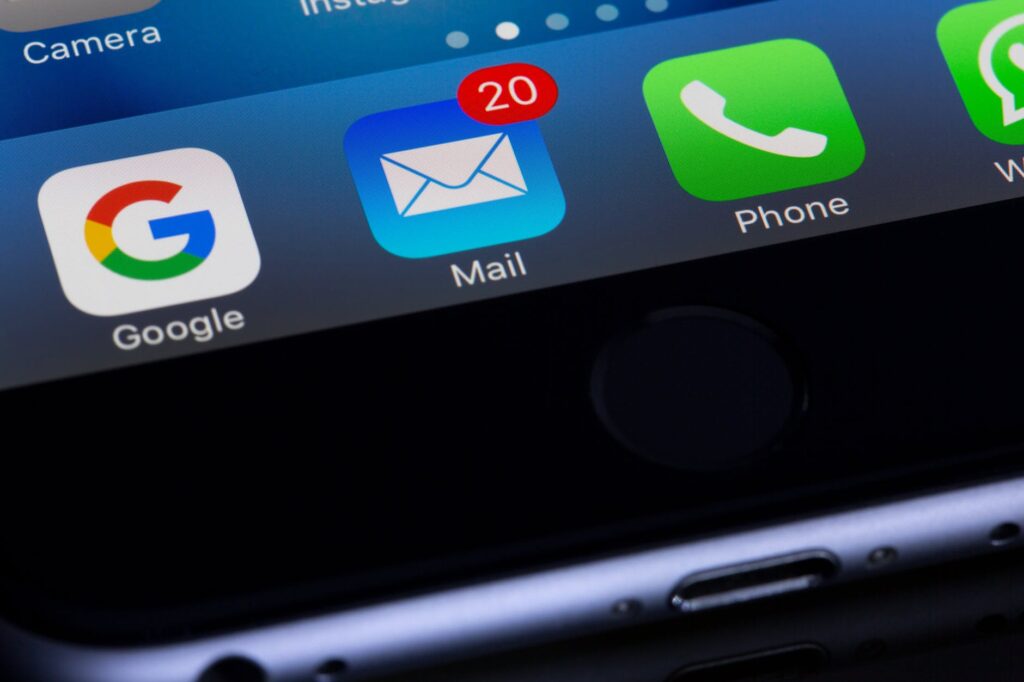Recruiters who utilize technology to source, screen, interview, evaluate, hire, and onboard the new talents stays true to the digital process of hiring. From social media to assessment tools and video interviews, every efficient remote hiring strategy is utilized by effective digital recruiting.
Benefits of Adapting a Digital Hiring and Recruitment Strategy
Sourcing
Everything has been made easy with the advent of technology in our lives; with this as a precedent, hiring and recruiting should also reflect that. The outdated sourcing process used to expect that the candidate looking for a job will come to you.
Still, because of how competitive the labor market is, the company needs to take a more proactive way to appeal to talents.
By embracing digital hiring and recruitment techniques during sourcing, a firm can digitize the talent pool, making the sorting post easier even for passive job candidates. Even when the company is not hiring, adapting digital tools will keep them up to date, from other company updates to available opportunities.
Another thing that digital tools can improve is optimizing the employer brand. This can be done in different ways, including enhancing SEO rankings and utilizing social media to entice potential talent effectively and add to the company’s talent pool.

Attracting
Now that sourcing is out of the way, the next step is to sell the job roles to excellent candidates and talent. Adopting technology in your digital hiring attracting tools can also do so much to make sure that your candidates don’t funnel out in just the sourcing stage.
Digital tools can update the application process and make it interactive, especially for entry-level position candidates. It could add video testimonies and other videos for the potential to get to know the company. Utilizing this tool can save time away from the recruiters and other hiring managers as an added benefit to attracting talents.
Aside from testimonies, candidates can also get a taste of working in the position if they choose to recruit with the help of Situational Judgment Tests. This will not only gauge their knowledge of the job but will gauge their critical thinking skills as well.
A situational test will also help the recruiter decide whose application will be moving to the next step based on how they will handle it. This process is leaps and bounds more significant at assessing each candidate than basing it solely on their resumes.
Selecting
Selection will prove crucial to filling the vacant role in the company, and shifting to embrace digital tools and technology in selection will significantly reduce the bias in the employing and recruitment process. This can be achieved by utilizing matching technology and automating the entire selection process.
Matching technology can help hasten the selection process with accuracy. Every one of the pre-employment tests, including the situational exam and some personality tests, will be checked and scored.
Upon scoring, the system will automatically match scores in each vacant position. This way, there is a shift in focus away from the position to be filled; instead, there is the test to focus on the candidate and their transferable skills.
There are many benefits to making everything digital. Still, the most crucial aspect, which is often overlooked, is candidates who source vacant positions at night.
Automating the system will help them get to the scheduling of interviews part without manual effort from the recruiting team.
Selection will prove crucial to filling the vacant role in the company, and shifting to embrace digital tools and technology in selection will significantly reduce the bias in the hiring and recruitment process. This can be achieved by utilizing matching technology and automating the entire selection process.
Matching technology can help hasten the selection process with accuracy. Every one of the pre-employment tests, including the situational exam and some personality tests, will be checked and scored.
Upon scoring, the system will automatically match scores in each vacant position. This way, there is a shift in focus away from the position to be filled; instead, there is the test to focus on the candidate and their transferable skills.
There are many benefits to making everything digital. Still, the most crucial aspect, which is often overlooked, is candidates who source jobs at night. Automating the process will help them get to the scheduling of interviews part without manual effort from the recruiting team.

Hiring
Once a company adopts a fully digital recruiting process, the hiring step is only when a candidate will be able to communicate with the team or a recruiter face to face. Digitizing this process will give the job candidate a chance to self-schedule.
Interview scheduling often slows down the recruiting cycle, and in return, it lowers the candidate experience because of how long it takes. Enabling them to self-schedule will take off a recruiters’ many tasks, and the ease of scheduling would significantly affect a better candidate experience.
No minutes will be lost, and the timeframe it would take to find the best job candidate will improve. Aside from the recruiting team and the time this will give them, this remedy will also significantly lessen the candidates dropping out of the entire hiring process before the interview. Candidate turnout and reporting will substantially be affected for the better.
Onboarding
The hiring process does not end in the “you’re hired” stage. After a tremendous digitized experience, it is only proper to extend the smooth sailing experience to the last stage of the acquisition cycle, which is the onboarding stage.
A manual and slow onboarding experience will be a let-down after the efforts of a digital system. Luckily, the foundation in which the whole digital hiring process is built is the leverage you need to extend the good experience on the onboarding stage. This is important, seeing as many are still in a work-from-home situation.
The transition of your chosen job candidate from an applicant to the best employee for the position will require digital onboarding. The need to quickly provide details and answer their questions will not only make the onboarding process a success but will also make sure that the new talent will be as comfortable as possible.
Beginning the Digital Hiring or Digital Recruitment Strategy
Mobile-Friendly Websites
The first step to making the hiring process digital is to make sure that all the company’s job postings and the website are optimized for a simple view on a mobile.
Although this may seem obvious for some, looking at the statistics in 2016, only 19% of all job recruiter postings can be accessible on mobile-friendly careers websites.
It is also essential not to ignore this, seeing as most people applying for work are looking at postings using their phones. Half of them will try to attach the file of their resume only to be met with errors, and with this comes more chances of a job seeker to back out. Not being optimized for use in a mobile setting will cost you who might have been the perfect fit for the job.
Incorporate Tech in all realm of Hiring
From souring remotely to the interviews and the onboarding, every aspect of the hiring cycle would be efficient if digitized. As stated before, an effective digital hiring process will only require a candidate to communicate with a hiring team member in the hiring process during interviews.
Injecting the digital experience into every realm of the job acquisition cycle can be done in a lot of ways. A lengthy application process can be amended by replacing the process with a mobile-friendly quick link to a LinkedIn import if the job seeker has it. This shortcut will reduce the bounce rate to all the company’s career pages.
Importance of Social Media
Another effective, mobile-friendly, and efficient digital process is leveraging social media to aid in sourcing and attracting job seekers and talent.
It is effective in spreading the company’s brand, and a proven statistic is pointing out how employers who utilize social media have a 49% improvement rate on the candidate quality versus when they are sourcing through traditional hiring channels.
Here are examples of social recruiting strategies a company can adapt to its hiring process. The most exact thing to do is use social media networks like Facebook and LinkedIn to post jobs; they can also make a YouTube channel to entice and share stories about different facets of the company’s culture, and tweeting about any company event and reward will spread the word about its brand.
Less is More
Thinking of digital hiring strategies as a means to an end and not an end in itself will help you determine the degree and benchmarks on where you need to optimize the process entirely. Although digital visibility is vital in digital recruitment, there is a line where the recruiting team’s bandwidth is stretched thin.
The application of the digital hiring process will significantly take the load out of the recruiter. Still, it can also take time from recruiting talent, mainly if the company adopts the YouTube channel route. The hiring team should identify the digital strategy they will adopt.
Suppose the company has the budget to tackle this challenge head-on. In that case, collaborating with different departments or even establishing a social media department to take that strategy will help significantly.
Customization
Looking at other hiring strategies of a competitor is helpful, but the hiring team needs to ensure that the digital systems they will adapt are catered and customized to the team’s capacity. Making sure that the strategies are catered to the company will require trial and error for the hiring team.
Suppose it has been proven that audiences and other job seekers are not engaging in a digital platform the team has adapted. In that case, it is most reasonable to skip the process and work to improve the strategies working efficiently.
A particular digital recruiting process might work for some audiences, and they may work less with the other. An effective company with a solid recruitment process will know the audience and customize each experience to work for everyone.

Utilizing Technology
No discussion in a digital process for hiring is complete without recognizing the technology that will make this strategy possible from Applicant Tracking System and even a mobile application for a one-time stop to your work hiring cycle. Gone are the days when corporations and businesses employed one-dimensional methods of having a checklist to screen candidates based on college degrees and experiences alone.
There is now digital recruitment technology that is far more sophisticated and can even identify the passive from the active work seeker. They can also now assess innate capabilities while still weighing in on other more traditional factors like education and work experience.
Make it Seamless
All these digital technology tactics need to be able to work seamlessly to give the feel effect to the job seeker and every new talent. No struggle should be experienced, from seeking out company information to attaching the digital files to their resume in the job posting.
Ensure that everything is in sync and all the information they need to apply for the job, like the employment description and requirement, is consistent to avoid confusing the candidate. Also, make sure that developers, especially on the posting and social media, are in-sync and that all of the information is updated.
Be Future-Oriented
In order to keep the workforce of the company rolling, constant recruiting needs to be done, and to survive, companies now need to let go of the traditional recruiting strategies to embrace the newer digital process. If companies are hesitant to take this leap, there are drawbacks, especially now that many are still expected to work from home because of the still threat of the virus.
A significant drawback is that they are losing business and are missing potential cuts, reducing burdens to the team that could come with the digital process. Applicants are now tech-fluent and savvy that they expect nothing else regarding hiring practices.
Make hiring decisions you’ll feel confident and proud about. HireNest helps you assemble the best team for your company’s growth.
Final Thoughts on Digital Recruitment
There is trial and error when fully transitioning to a digital process in hiring in the business. Although once achieved, what was then a time-consuming and totally manual process will run smoothly and enjoyable not only to the applicant but also to the whole recruiting team. Adapting this system to the business will fully impact the whole hiring cycle from end to end.

FAQs
What is digital hiring?
It is the process of using technology in all realms of the recruiting cycle, from sourcing to interviewing to onboarding, to fill a vacant position in a firm or business.
How important is digital recruitment?
Adapting a fully digital process in recruiting is essential, especially now that many are still expected to keep WFH. Many systems have shut down due to Covid, but digitizing can keep it alive.
What is digital talent acquisition?
Digital recruitment is the process of acquiring skilled workers by using the digital techniques made available for the recruiters.
